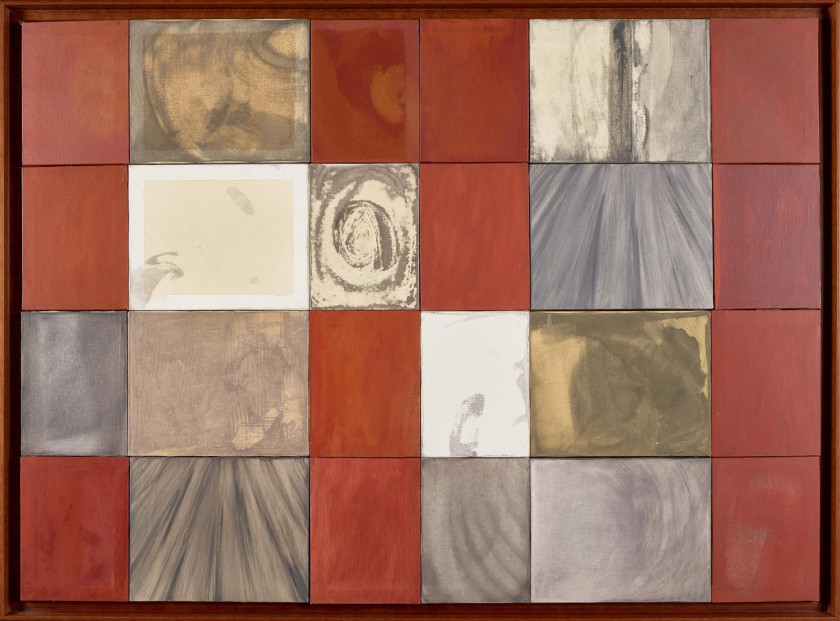Tempo [Time]
painting


1991
Oil on canvas
97 x 133,4 cm
This polyptych is made up of twenty-four paintings (24 hours...), organised vertically in a total of six columns, four of which are more compact with the predominance of the colour red, supporting two other wider vertical columns that suggest large "windows", pierced by light where the images are formed and the world is allowed to look at and meditate on the time that dilutedly soaks things, bodies and words.
Each of these two large "windows" has four "glasses", four views, four paintings. Barrias liked to be at the window, to watch the theatre of the world, and to think through the gaze. In this, as in many of his other pieces, the work is born slowly, made up of hesitant actors who take their place in the great scene that attracts him like a kind of good abyss, in the name of the time passage he so materially loved. Painting has always been his great master of ceremonies.
The solid reds of Rome are unbalanced by four small vertical canvases that did not reach colour, thus disturbing the hypothetical stability of the monochromes (a kind of brick masonry), as well as the logic of the composition of three of the four columns of this pictorial fragment of a hypothetical stylised building, constructed to imagine the world as we look at it in its vital fragmentation.
This polyptych is, like many of the author's works, a fragmented composition that brings together different moments, a stained glass window matured in the passage of time, about the time.
António Cerveira Pinto